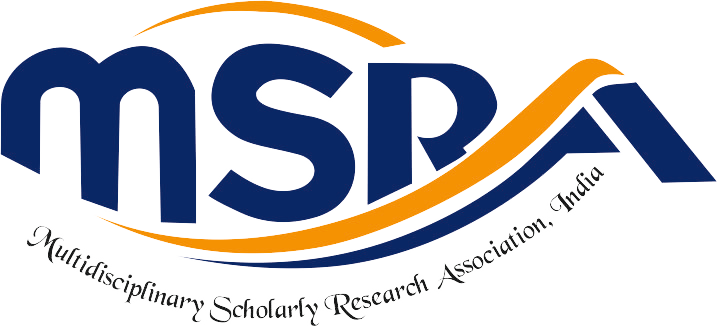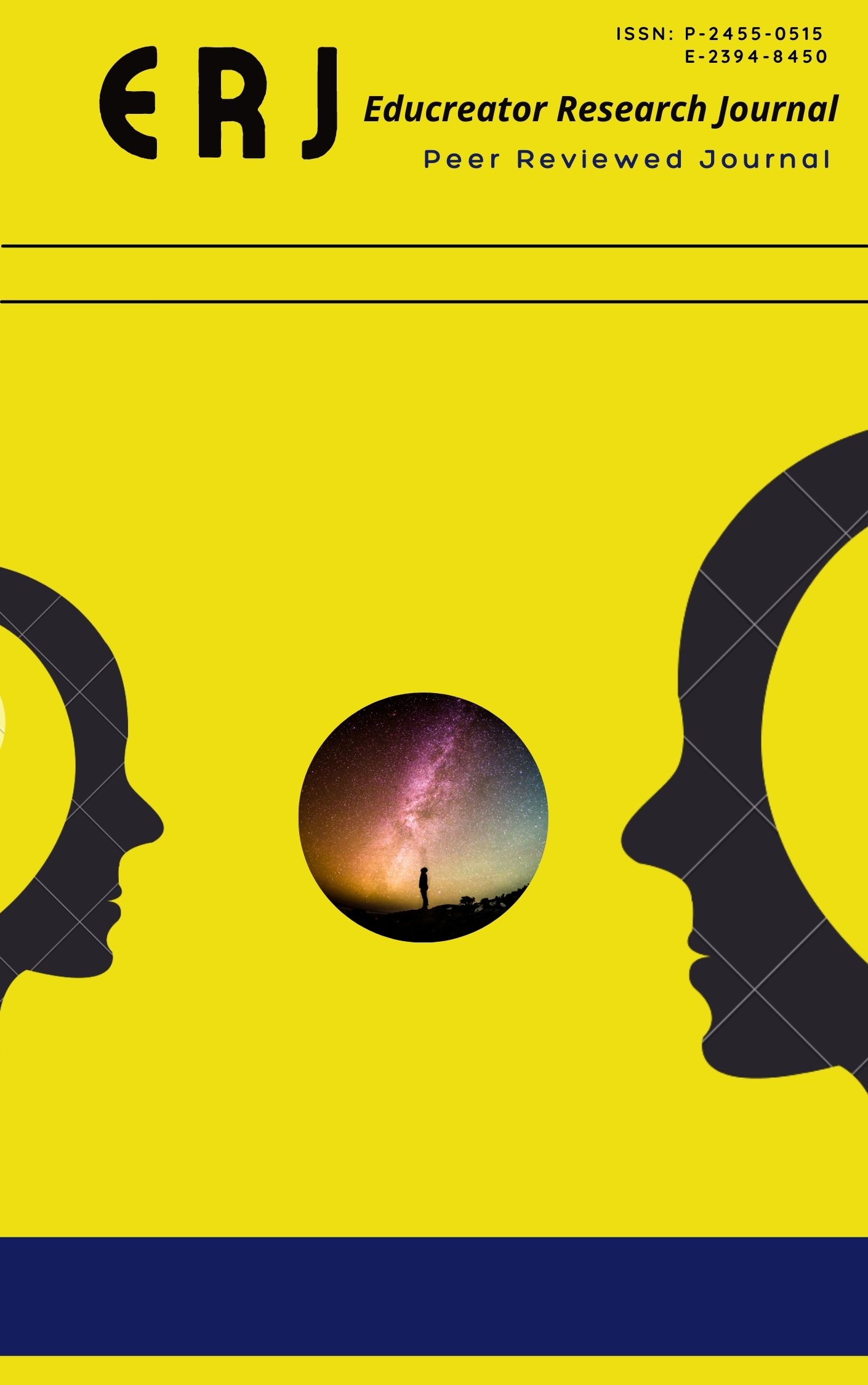Multidisciplinary Scholarly Research Association
Multidisciplinary Scholarly Research Association, India is a culmination of like-minded eminent
researchers who joined together to build and strengthen research across India, the largest continent
pooling in experts from countries. India is very popular for its rich heritage and culture. Though
having such credentials there still exist a gap in practical application of the results... read more
Recently Published Articles
Original Research Article
|
June 30, 2025
118 Downloads
INDIA-CHINA BOUNDARY PROBLEM 1846–1947 – HISTORY AND DIPLOMACY BY A. G. NOORANI
Dr. Rohit Jadhav
DOI : 10.5281/erj.15762547
Abstract
Certificate
Boundary issues have always been a key focus in India-China relations. Highlighting the roles of history, policy, and diplomacy, this book traces the origins and development of the boundary problem during the British Raj. A.G. Noorani explains how British efforts to define a boundary in the western sector began immediately after the creation of Jammu & Kashmir in 1846. In contrast, in the eastern sector, such efforts only started sixty-five years later, amid perceived Chinese threats. Analyzing the roles of bureaucracy and diplomatic negotiations, the author offers a nuanced view of treaties, conventions, and internal debates among British officials with conflicting policies. Breaking new ground, this book evaluates the importance of the Indian Independence Act, 1947, and shows how diplomatic developments over the past century influenced the boundary issues between India and China, which eventually escalated into the dispute of 1959. The central argument is that history played a direct role in shaping effective policy. Based on archival research and unpublished sources, this volume includes twenty-two appendices and fourteen maps to offer a unique perspective on a long-standing problem.
Original Research Article
|
April 30, 2025
93 Downloads
DR. B.R. AMBEDKAR’S ADVOCACY FOR IRRIGATION PROJECTS TO SUPPORT RURAL LIVELIHOODS
Manisha Rajendra Paradhi
DOI : 10.5281/EIIRJ.15584783
Abstract
Certificate
Dr. B.R. Ambedkar is widely known for his contributions to social justice, constitutional development, and the upliftment of marginalized communities. However, his significant work in shaping India’s water and irrigation policies remains an underexplored area of research. This paper examines Dr. Ambedkar’s advocacy for irrigation projects, focusing on his vision for sustainable rural development. Through an analysis of key policies, institutional frameworks, and major irrigation projects initiated under his leadership, the paper highlights his enduring influence on India’s rural economy. It also contextualizes the impact of these policies on agricultural productivity and economic empowerment in rural areas.
Dr. B.R. Ambedkar’s legacy extends beyond his contributions to social justice and constitutional development to his pioneering role in shaping India’s water resource management policies. During his tenure as a member of the Viceroy’s Executive Council (1942–1946), Ambedkar championed large-scale irrigation projects aimed at supporting rural livelihoods. This paper examines his advocacy for equitable water distribution, the establishment of institutional frameworks, and his role in initiating major irrigation projects. Through a critical analysis of these initiatives, the paper highlights Ambedkar’s long-lasting influence on India’s rural economy and the relevance of his water management vision to contemporary challenges.
Original Research Article
|
April 30, 2025
105 Downloads
TOWARDS INCLUSIVE GROWTH: AMBEDKAR’S GENDER EQUALITY IDEALS IN 19TH CENTURY INDIA
Dr. (Mrs.) Sanghamitra Mishra
DOI : 10.5281/EIIRJ.15584693
Abstract
Certificate
The present study aims to explore and analyse Dr. B.R. Ambedkar’s vision, ideas, and policy prescriptions concerning emancipation and empowerment of the deprived class of society, situating them within his social, economic and political framework. Ambedkar’s thoughts on the issues are not isolated but deeply embedded in his larger vision of societal transformation. His ideas were shaped through a prolonged cognitive process, which was influenced by his experiences of caste-based discrimination and the social surroundings of his upbringing. Significant early influences included his father, who instilled in him a deep respect for rationality, justice, and the rule of law, and his education at Columbia University, which broadened his intellectual horizon, his perception towards life and his attitudes towards humanity. These experiences collectively shaped Ambedkar into a visionary reformer committed to social justice, particularly for the marginalised, deprived lower caste section of society.
Dr Ambedkar envisioned an India where unity could be built through the acceptance of diversity and the recognition of the rights of all communities, especially the underprivileged. His realisation of the divisions in Indian society along caste, gender and religious lines emphasised the need for a representative government that safeguards the rights of various social groups in proportion to their population. His vision laid the foundation for the inclusion of affirmative action and positive discrimination measures in the Indian Constitution. Ambedkar identified inequalities rooted in caste, religion and inherited social status as major barriers to progress. He critically examined Brahminical customs and male-dominated structures that restricted individual freedom, denied property rights to women, and enforced caste-based subordination. Central to his critique was the concept of ‘graded inequality’—a hierarchy within the caste system that institutionalised social oppression. Ambedkar proposed and implemented measures to liberate Dalit and underprivileged women from the oppressive structures of caste-based discrimination.
Original Research Article
|
April 30, 2025
51 Downloads
EMPOWERING LIBRARY SUPPORT STAFF: A 15-YEAR JOURNEY OF TRAINING, LEARNING, AND ACHIEVEMENTS
Dr. Shubhangi M. Vedak
DOI : 10.5281/amierj.15262191
Abstract
Certificate
Globalization and rapid advancements in ICT have intensified competition across various fields, including academic libraries. The introduction of new technologies like Library Automation, Web 2.0, digitization, QR codes, and the recent AI tools has significantly raised user expectations. To meet these demands, effective use of ICT and continual updates to library practices are crucial. This requires comprehensive training for all library staff—professional, para-professional, and support staff. While professional staff often have access to stay updated through conferences, seminars, workshops and development programmes, para-professional and support staff, often lack such opportunities. These support staff who are vital in delivering library services and representing the library to users, should also receive proper training in recent trends in the field. To address this, Ramniranjan Jhunjhunwala College, Ghatkopar, Mumbai has been conducting an annual one-week training programme for Library Support Staff (LSS) for the past 15 years. This paper discusses the learning experiences, features and evolution of the programme’s themes, topics, and sessions, along with feedback and challenges faced.
Original Research Article
|
April 30, 2025
99 Downloads
LIBRARIES VS. SEARCH ENGINES: CULTIVATING CRITICAL THINKING IN THE DIGITAL ERA
Dr. Sangharsh Shamrao Gajbe, Mr. Laxmikant Madhusudhan Satpute & Dr. Sandesh Mahadeorao Dongre
DOI : 10.5281/EIIRJ.15584502
Abstract
Certificate
Libraries have an underappreciated position in an era where tools like Google are the prerogative digital search engine. In this paper, we will emphasize the distinct roles libraries play in providing access to reliable, curated content and developing critical thinking skills and working toward lifelong learning. It stitches together a comparison between the segmented, algorithmically-ordered content we find on search engines and the organized, expert-pedagogically direct study spaces we find in libraries. It addresses challenges such as limited funding and evolving user expectations, alongside examples of innovative responses such as digital literacy programs and AI-assisted services. It ends with a re-emphasis of the continuing relevance of libraries, and a call that policy should be directed towards strengthening their role in equitable and meaningful dissemination of knowledge.
Original Research Article
|
April 30, 2025
82 Downloads
DR. BABASAHEB AMBEDKAR'S CONTRIBUTION TO INDIA’S WATER POLICY AND UTS RELEVANCE TODAY
Dr. Mahadeo Yadav
DOI : 10.5281/EIIRJ.15585018
Abstract
Certificate
Dr. B.R. Ambedkar, made a significant contributions in various fields such as law, conomics, social justice, and politics. However, his contributions in the field of water policy are often overlooked.Dr Babasaheb Ambedkar’s thoughts on water management were visionary.
He proposed numerous concepts and introduced various strategies for the management of water resources.
Ambedkar was a pioneer in the field of developing multi-purpose projects in India.. He used to say that local communities should be involved in water management. He would often state that Water cannot be separated into various sections and it should be used in a multipurpose manner. In this research paper, I examined how Dr. Babasaheb Ambedkar's ideas on water management are beneficial in addressing water issues in India today. Babasaheb Dr. B.R. Ambedkar played a crucial role in the conceptualization of several significant projects as a Member (Labour) in the executive council of the Viceroy. Babasaheb played a vital role in formulating and implementing water policies in India, and his contributions have been invaluable in developing the water infrastructure of our country
Dr. Babasaheb Ambedkar was instrumental in creating the Multi-Purpose River Valley Projects and Large Dam Technologies in India. Dr. Babasaheb Ambedkar was the creator of the Damodar Valley project, the Bhakra-Nangal Dam project, the Sone River Valley project, and the Hirakud Dam project. In 1945, under the chairmanship of Dr. Babasaheb Ambedkar, it was decided to invest in the potential benefits of controlling the Mahanadi for multi-purpose use
Original Research Article
|
April 30, 2025
93 Downloads
LIBRARIES AND WOMEN’S EMPOWERMENT: DR. B. R. AMBEDKAR’S VISION OF GENDER EQUALITY
Ms. Sandhya Dokhe
DOI : 10.5281/EIIRJ.15584849
Abstract
Certificate
Libraries play a pivotal role in democratizing knowledge and fostering social empowerment. In the context of women’s empowerment, libraries act as agents of change by facilitating access to information, promoting literacy, and providing safe spaces for learning and dialogue. This paper explores the connection between libraries and women’s empowerment through the lens of Dr. B. R. Ambedkar’s ideas of gender equality. Ambedkar, a visionary social reformer and architect of the Indian Constitution, emphasized education and equal rights for women as essential to social justice. His advocacy for women's liberation from caste and patriarchal structures finds contemporary relevance in how libraries serve as tools for transformation. This paper examines historical milestones, current practices, and future strategies to align library initiatives with Ambedkar’s egalitarian principles. Through case studies, policy reviews, and community-based experiences, the paper argues that libraries are not just repositories of books but instruments of equity, especially for marginalized women. A multidisciplinary approach is adopted, covering gender studies, library science, and legal frameworks to propose an inclusive model of library services that promotes women’s autonomy, leadership, and participation in nation-building.




